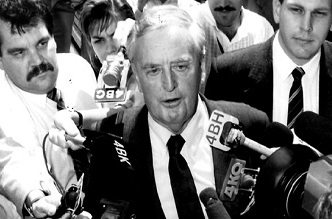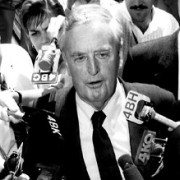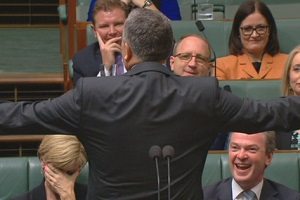Answer the Question!
By Doug Weller
There have been some subtle changes in media message delivery over the years – subtle but important.
Back in the days of the former Queensland Premier, Joh Bjelke-Petersen, 
Then, the easy way out of a tight spot during media interviews was often to ignore the questions and punch away at the key messages. In fact many people still think that is the way to go.
I was shocked when I was asked to speak to some media students about media communications.
During the intro the host said “Now Doug will tell you how to refuse to answer questions during media interviews”. I had to do some fancy footwork to make sure I didn’t embarrass the host because that is not the way to conduct media interviews.
Journalists, and in my view the community, are sick of people refusing to answer media interview questions. The ‘ignore the question’ days are over.
You need to be believable and convincing in media interviews – this means responding to journalist’s questions.
Yes, it’s absolutely crucial that you go into your media interviews with clear, concise, jargon free messages. But those messages need to be delivered credibly.
It’s easy to respond to questions and also go to your message.
At the end of the day journalists want to leave any discussion or interview with a clear understanding of what you’re saying about a particular issue.
Responding to journalists or commentators questions is absolutely crucial in live radio, or TV interviews.
In some cases interviewers will simply repeat the question if you refuse to answer it. I’ve heard entire interviews where the journalist asks the same question again and again because it hasn’t been answered.
This doesn’t reflect badly on the journalist, it reflects badly on the interviewee.
Politicians are under increasing pressure to get it right.
Australian Deputy Prime Minister, Julie Bishop, is normally an excellent media performer.
But when she was asked during a radio interview to explain the nuts and bolts of new ‘transition to retirement’ rules, she attempted to give a vague answer and return to her message – it didn’t work.

Image Source: 3AW693 News Talk
Sometimes it’s OK to ignore the odd question and go straight to the message, especially in a heated interview. But not during an election campaign and not when you’ve upset the hell out of a stack of retirees.
Politicians, or anyone for that matter, need to be very good at explaining the detail when they’ve delivered painful change.
If you’re in the head space of ‘don’t answer the question, just deliver the message’, stop it. Those days are gone.
The other lesson from the Bishop interview is that giving vague answers and then going to the message no longer cut it, especially with interviewers like Neil Mitchell.
If you want to be credible in the media, send a clear message to journalists and audiences that you are willing to answer questions put to you.
Always deliver appropriate messages that are of value to you and that answer the question.
Information Only
Any information presented on our website is of a general nature only and is not intended as a substitute for professional advice.
Further Assistance
If you want to know more about engaging with the media, contact Corporate Media Services for more information about our media training programs and services. Make an email enquiry now… or call 


